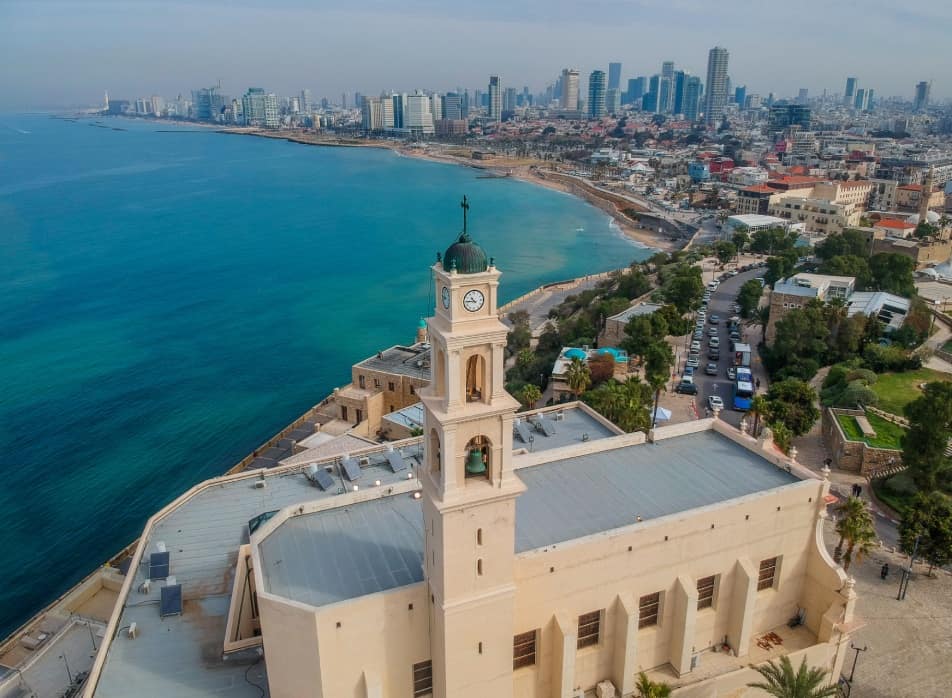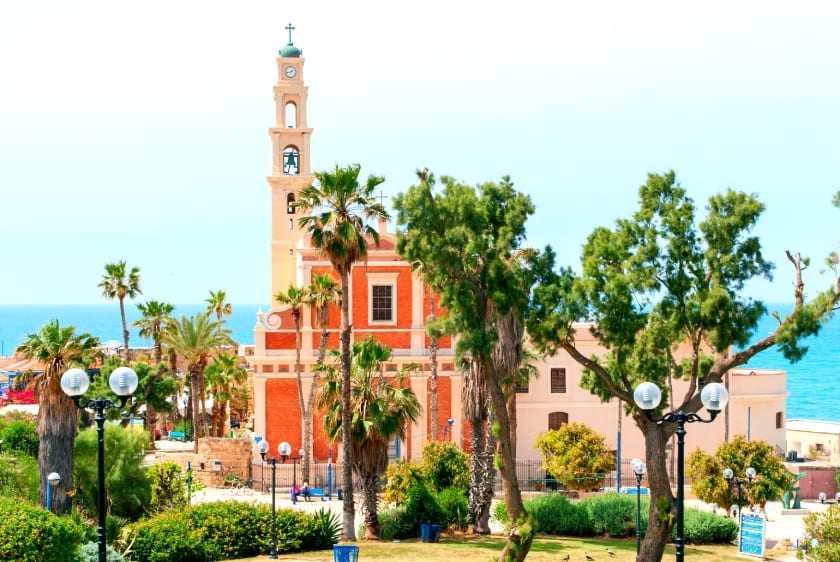St. Peter’s Church in Jaffa is a Franciscan church in the historical part of Jaffa, now part of Tel Aviv. According to Catholic tradition St, Peter’s church in Jaffa stands on the site of the house of Simon the tanner, with whom Peter stayed while in Jaffa, where the miracle of the dream was revealed to him:

About noon the following day as they were on their journey and approaching the city, Peter went up on the roof to pray. 10 He became hungry and wanted something to eat, and while the meal was being prepared, he fell into a trance. 11 He saw heaven opened and something like a large sheet being let down to earth by its four corners. 12 It contained all kinds of four-footed animals, as well as reptiles and birds. 13 Then a voice told him, “Get up, Peter. Kill and eat.” 14 “Surely not, Lord!” Peter replied. “I have never eaten anything impure or unclean.” 15 The voice spoke to him a second time, “Do not call anything impure that God has made clean.” 16 This happened three times, and immediately the sheet was taken back to heaven.
Peter’s vision of a sheet with animals (Acts 10: 9-16)
The church was constructed in its present location because of the significance Jaffa has to Christianity. It was in Jaffa that Saint Peter raised Tabitha; one of Jesus’ disciples, from the dead according to the Acts of the Apostles, Acts 9:36–43, Acts 10:1–4. The church is dedicated to him.
Since the large church is located on a hill near the shore, the building has historically dominated the view of Jaffa from the sea, thus serving as a beacon to pilgrims, signaling that the Holy Land is near.

The Architecture of St. Peter’s Church in Jaffa
St. Peter’s Church in Jaffa with its tall, brick façade and towering bell tower, St. Peter’s Church in Jaffa is the single largest and most distinctive building in Old Jaffa. The interior of the church is reminiscent of cathedrals in Europe, with a high vaulted ceiling, stained glass, and marble walls. The stained glass was manufactured in Munich by renowned artist Franz Xaver Zettler. The four panels in the interior of the church depict episodes from the life of St. Peter, including the miraculous catch of fishes, the giving of the keys, the transfiguration of Jesus on Mount Tabor, and the washing of the feet at the Last Supper.
With the exception of depictions of Tabitha, Francis of Assisi, and the Immaculate Conception, all of the other windows in the church depict Spanish saints, which is unsurprising since the present building was erected by the Spanish Empire. Also of note is the pulpit which is carved in the shape of a lifelike tree. St. Peter’s Church also contains thirteenth-century remnants of St. Louis’ citadel located outside and to the right of the sacristy. The remnants include two whole rooms which are circular in shape, have low ceilings and fire embrasures. It is in these rooms that Napoleon is said to have lived while he was at St. Peter’s in 1799 during the French campaign in Egypt and Syria.
Some Context About the St. Peter’s Church
The importance of Jaffa to the Christian world was that it was the main gateway for the pilgrims who made their way to Jerusalem. On the site of the church stood a Byzantine church that was destroyed in the 7th century by the Arabs. On its ruins, Frederick II, Emperor of the Holy Roman Empire, erected a Crusader fortified structure called the “Fortress”; which was restored during the Seventh Crusade during the second half of the 13th century, by Louis IX, King of France. Furthermore, the fortress was destroyed by the Mamluks in 1264. But one of its round towers survived and was incorporated in the northwest corner of the present structure.
In 1654, Franciscan monks built a new church and pilgrimage lodge (Casa Nova) which served as a roadside hotel on the way to Jerusalem. Napoleon stayed in this church during his journey to Israel in 1799. This church was destroyed, rebuilt, and again destroyed; between 1888–1894 the present Baroque building was erected under the auspices of the Spanish royal family. The church was expanded in 1903 and served as the city’s main Catholic church until St. Anthony’s Church was built on Yefet Street in 1932.

